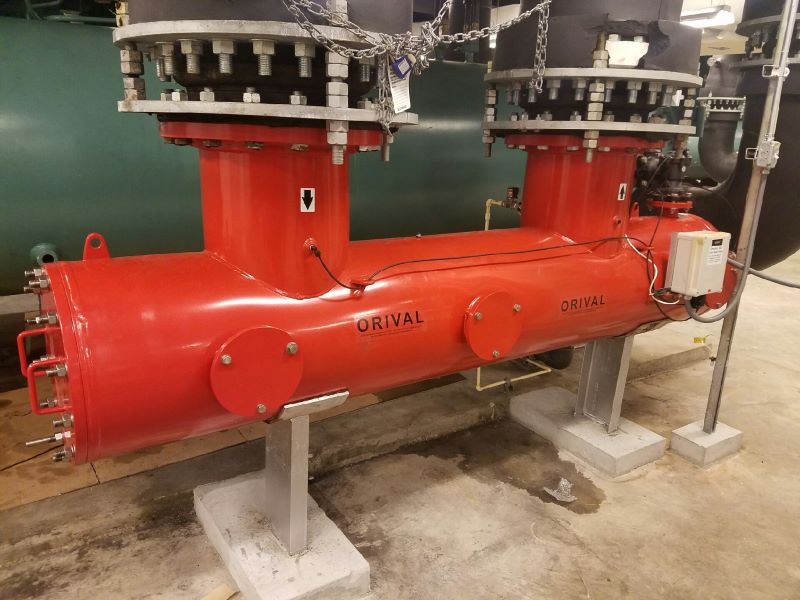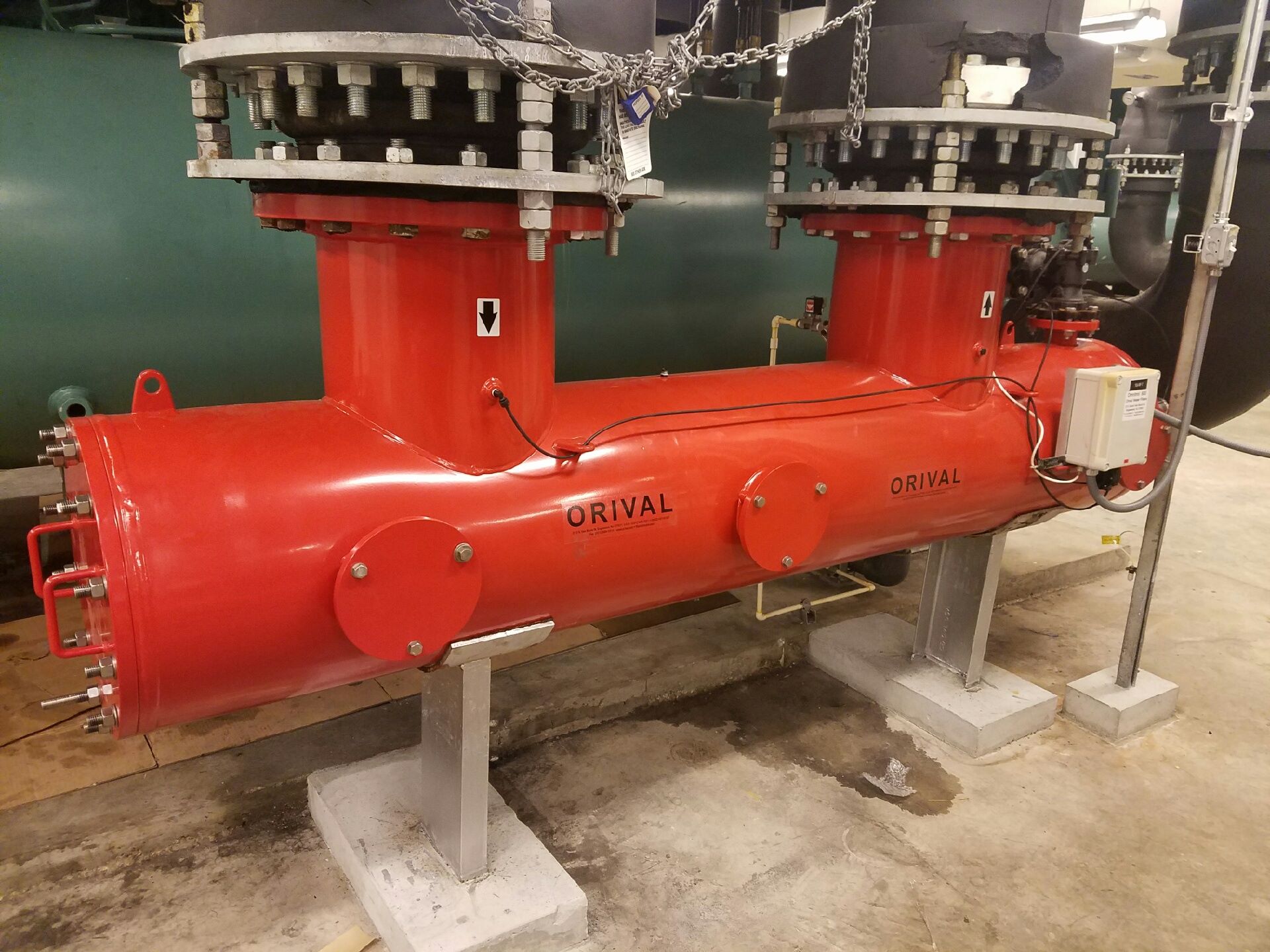HVAC System Water Filtration Solutions
Most large commercial grade air conditioning systems rely on chilled water as the cooling medium. They consist of two loops of recirculating water, one to remove the energy from the airstream and the other to reject this energy to a suitable location.
Chilled Water Loop
The loop used to remove the energy from the conditioned air is a closed loop system, consisting of a chiller, pump, heat exchanger coil and related piping, valves, etc. The water is pumped through the chiller, where a heat exchanger is used to transfer the energy from the chilled water loop to the refrigerant. The water then travels to the heat exchange coil located within the air handling unit(s), where it picks up more energy from the airstream and is returned to the chiller.
Condenser Loop/Cooling Tower
The heat rejection loop is the most common application of Orival filters. This loop typically consists of an outdoor cooling tower, pump, condenser coil (in chiller) and related piping. The water is pumped through the condenser coil in the chiller, where it picks up the excess energy removed from the chilled water. The water then travels to the cooling tower, where it is exposed to the ambient air to reject the unwanted energy.
Conclusion
Chemical treatment alone cannot solve the problems associated with suspended particulates in the cooling system. Relying on blowdown alone is a hit and miss proposition at best. The best approach is a combination of methods, including the use of Orival automatic self-cleaning filters. With the adoption of the new ASHRAE standard for HVAC system efficiency, more focus will be placed on individual components than ever before. Orival filters can help reduce the fouling of heat exchange surfaces, not only reducing maintenance costs but increasing overall system efficiency as well.

